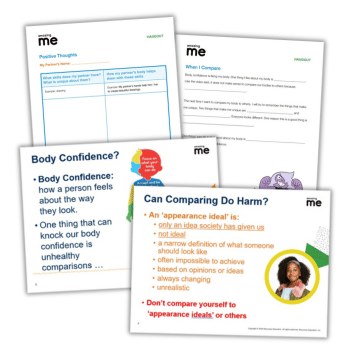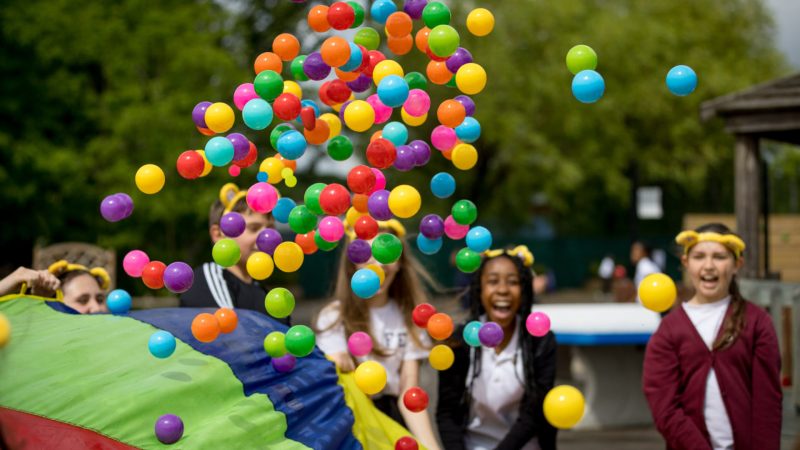Self-determination theory – What it is and how to use it

Some small tweaks to our practice can be the key to better learning, motivation and long-term happiness…

Many common practices in schools can actually harm motivation and wellbeing. This is why I believe every teacher and school leader needs to know about self-determination theory (SDT).
Because some small tweaks to our practice can be the key to better learning, motivation and long-term happiness.
What is self-determination theory?
Self-determination theory is a model of motivation proposed by two eminent psychologists, Edward Deci and Richard Ryan, back in the 1970s.
SDT states that humans have three core psychological needs that are the foundations of our motivation and wellbeing. These are competence, autonomy and relatedness (more on these later).
When those needs are satisfied, we feel motivated, we are productive, and we are content with our lives. But if those core needs are denied, we can become lost, unproductive and miserable.
SDT is another way of talking about intrinsic motivation – that is, motivation that comes from within. When we’re intrinsically motivated, we do things for their own sake and derive satisfaction from doing so. We don’t need rewards or the threat of punishment to get us to act and behave in certain ways when we are self-determined.
The history of self-determination theory
Since the 70s, hundreds of studies have backed up Deci and Ryan’s original findings. One recent study by Frank Martela at the University of Helsinki surveyed over 45,000 adults across 27 European countries.
Martela found that high scores for competence, autonomy and relatedness were strongly correlated with higher levels of life satisfaction and having a sense of meaning in life. This matters, because the latest Good Childhood Report (2024) put UK children as the unhappiest in Europe, and children’s ‘happiness with school’ as the lowest score to date.
What’s the harm?
Deci and Ryan’s original research was seen as heretical at the time, because it claimed the way many businesses and schools were set up harmed intrinsic motivation.
Let’s take the common practice of rewards (think certificates, stickers, house points). Deci and Ryan claimed that when a person expects a reward (e.g. house points) for carrying out an activity (e.g. completing work), they attribute their behaviour to the reward rather than the activity.
In the short term, this doesn’t seem problematic. Pupils are completing work and, we assume, learning. However, once the activity is linked with the reward, children will think the activity is always associated with a reward. And once the reward is removed, children will be less inclined to complete the activity in the future.
It’s not just rewards that can harm motivation; punishments can, too.
Common thinking in schools is that if you want to stop certain unwanted behaviours, then you increase the sanctions associated with them. If a child talks in a ‘silent corridor’, for example, then a detention or missing some of their playtime will put them off engaging in that behaviour in the future, or so the logic goes.
But, in Psychology in the Classroom, psychologists and teachers Marc Smith and Jonathan Firth state that ‘Highly controlled classroom environments undermine intrinsic motivation.’ They go on to say, ‘Research strongly indicates that practices that attempt to motivate pupils through sanctions… undermine the quality of student engagement.’
What works?
It’s important to point out that I am not advocating for eliminating all rewards and sanctions in schools. The point is, if we rely too much on them to motivate our pupils, research indicates we are barking up the wrong tree.
Instead, we need to provide children with classroom environments that support their need for competence, autonomy and relatedness. Let’s take a look at these in a bit more detail.
Competence
This is about our need to master our environment. We need to feel like we have the knowledge and skills to achieve goals that matter to us.
This need can be fulfilled in schools through good-quality teaching when:
- the teacher breaks down complex tasks for the children
- the teacher models good learning
- the teacher gives children feedback that helps them feel they are making progress.
Autonomy
This is about our need to feel in control of important aspects of our lives. Having a sense of control is strongly related to wellbeing. Having autonomy is also crucial to managing the stress of learning new things. Stress expert Dr Elissa Epel explains in The Stress Prescription that ‘feeling ‘in control’ can reduce stress…
A high sense of perceived control in life is associated with being happy, healthy and wealthy.’ Smith and Firth agree, explaining that ‘classroom environments that encourage autonomy result in greater levels of learning and performance outcomes than styles deemed to be more controlling.’ See the panel on the right for some ideas on putting this into practice.
Relatedness
This is about our need to feel a sense of connection to others and feeling like we belong to something bigger than ourselves. Humans are a hyper-social species after all.
Professor Riley at the Institute of Education found that increasing a sense of belonging in school is associated with increased wellbeing, better attendance, improved academic outcomes and higher staff morale and motivation too.
Ultimately, fostering belonging in school is about letting your class know that they are part of your team, that they are valued, that they have an important role to play, and that you all have each other’s back.
A future with self-determination theory
If we are to become a more evidence-informed profession, we need to ditch outdated practices that research shows are not the most effective ways to motivate children or make them happy. Every teacher needs to know that SDT exists and how it can enhance their teaching practice.
And, of course, SDT is not just about children. Teachers need to feel competent, connected and in control as well. Fulfilling these core human needs could even be the most effective way of solving the retention crisis.
Self-determination theory in practice
Not sure where to start? Try these pointers to help your children develop intrinsic motivation.
- Rely less on house points and certificates to reward children making academic progress.
- Use more positive encouragement and verbal praise. These act as better motivators, because once they are taken away, the motivation remains.
- Give children more roles and responsibilities that help them feel in control (e.g. school council or playtime leaders).
- Enable student voice by asking them what they think about school, and what could be improved, and then acting on their suggestions (where appropriate!).
- Where possible, let children have a say on what they learn in class (perhaps by voting on their next class text).
- Create a ‘team flag’ with your class, filled with representations of your values.
- Set team goals, encouraging your class to work together to achieve them.
- Use humour to build rapport and reduce the stress and tension of learning new things.
- Use ‘belonging cues’ (smiles, warm body language, fist bumps, high fives, shared rituals) that let children know they are safe, connected, and that they share a future with you.
Adrian Bethune is a part-time teacher in Aylesbury. The second edition of his book, Wellbeing in the Primary Classroom is out now. Find out more about Adrian’s work on wellbeing at teachappy.co.uk








